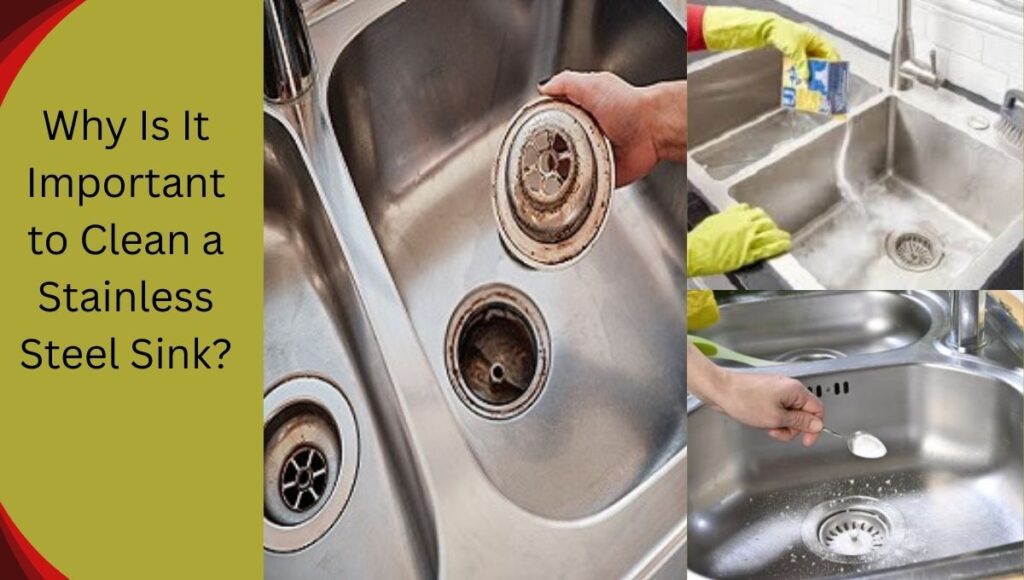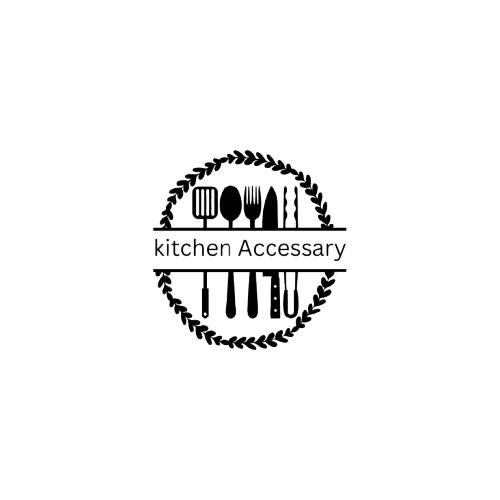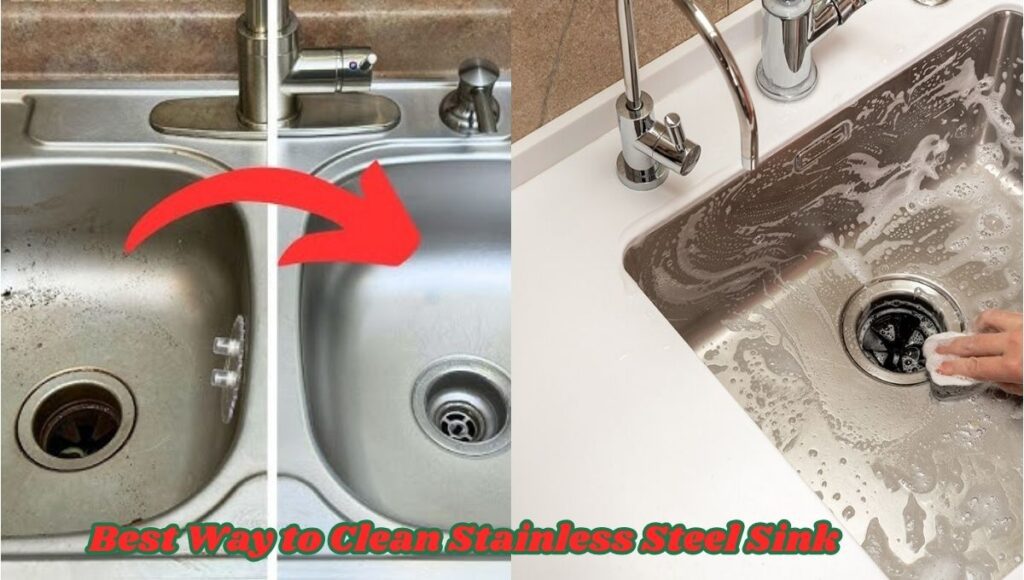Stainless steel sinks are a popular choice for kitchens and bathrooms due to their sleek appearance and durability. However, over time, they can accumulate stains, water spots, and grime, which can dull their shine. If you’re wondering how to restore your sink to its former glory, you’re not alone! In this guide, we’ll explore the best way to clean a stainless steel sink, using simple yet effective methods that will leave your sink sparkling clean and looking brand new.
Why Is It Important to Clean a Stainless Steel Sink?
Before we get into the cleaning steps, let’s talk about why it’s important to clean your stainless steel sink regularly.
Regular maintenance of your Stainless Steel Sink will ensure its longevity and aesthetic appeal, keeping your Stainless Steel Sink looking pristine.

To ensure your Stainless Steel Sink looks great, consider implementing a regular cleaning routine to keep your Stainless Steel Sink in top condition.
- A shiny sink looks good: Cleaning helps your sink stay shiny and beautiful.
- Avoid stains: Dirt, oil, or food can leave marks. Regular cleaning helps remove stains quickly.
- Prevent rust: Rust can form if the sink is not cleaned or dried properly.
- Keeps your sink safe: Clean sinks have fewer germs and bacteria. This is important for your health, especially in the kitchen.
Common Problems with Stainless Steel Sinks
While stainless steel sinks are strong and long-lasting, they can still face some issues if not cleaned properly. Here are some common problems:
- Water spots: These happen when water dries on the sink, leaving marks.
- Stains: Stains from food, oil, or soap can show up on the surface.
- Rust spots: Small rust spots may appear if water or dirt sits for too long.
- Scratches: Using hard scrubbers or rough tools can scratch the surface.
These problems are easy to fix with the right cleaning methods.
Understanding how to care for your Stainless Steel Sink is crucial for preserving its appearance and functionality.
Tools You Need to Clean Your Sink
To clean your stainless steel sink, you don’t need expensive products. Here are the basic tools and ingredients you will need:
- Dish soap: A simple cleaner to remove food and grease.
- Baking soda: A natural cleaner to scrub away dirt and stains.
- Vinegar: Assists in eliminating water marks and maintaining a glossy finish on the sink.
- Microfiber cloths: Soft cloths to wipe and polish the sink.
- Soft scrub brush: Gentle on the sink, but helps clean tough stains.
- Lemon: Helps remove rust and adds shine.
- Stainless steel cleaner: A special cleaner for making your sink look like new.
These ingredients are easy to find in your home. With them, you can keep your stainless steel sink sparkling clean.
Step-by-Step Guide to Clean a Stainless Steel Sink
Now, let’s get into the steps for cleaning your stainless steel sink. Just follow these simple steps, and your sink will shine!
Empty the Sink
Start by clearing your sink of all dishes, food, and other items. A clean sink will help you clean it better. Once the sink is cleared, flush it with warm water to wash away any loose dirt or debris.
Use Dish Soap
Next, mix a bit of dish soap with warm water until combined. Using a soft cloth or sponge, gently wipe down the entire sink. Dish soap works to break down grease, food residue, and soap buildup. Be sure to clean every part of the sink, including the faucet and drain area.
Scrub with Baking Soda
Once you’ve applied dish soap, dust the sink’s surface with baking soda. This natural cleaner is excellent for scrubbing off stubborn stains and grime. It’s soft enough to not scratch the stainless steel but powerful enough to remove dirt.
- Take a damp cloth or sponge.
- Gently scrub the sink in circular motions.
- Focus on any areas with stains or dirt. Baking soda will work on tough spots like food stains, watermarks, or soap scum.
Use Vinegar or Stainless Steel Cleaner
If your sink still has water spots or tough stains, you can use vinegar or a stainless steel cleaner. Here’s how to do it:
- For vinegar, pour a small amount onto a soft cloth or directly onto the sink. Wipe the entire surface with vinegar. It will help remove water spots and stains.
- For stainless steel cleaner, follow the instructions on the bottle. Apply a small amount of cleaner and wipe the sink to remove stains and give it a nice shine.
Buff and Polish the Sink
Once your sink is clean, it’s time to polish it. Use a clean microfiber cloth to gently buff the surface. Buffing in circular motions will help remove any remaining spots and give your sink a beautiful shine.
Polishing your stainless steel sink will help keep it shiny and protected from future stains and water spots.
Dry the Sink
Once you’ve cleaned and polished, be sure to dry the sink using a soft cloth to remove all moisture. This will prevent water spots from forming. Drying the sink helps keep it looking shiny and clean for longer.
Dealing with Tough Stains and Rust Spots
Sometimes, even after cleaning, there may be tough stains or rust spots. Don’t worry. Below are some helpful tips for managing them effectively.
For Tough Stains:
- Make a paste with baking soda and water.
- Apply the paste to the stain and let it sit for about 10-15 minutes.
- Use a soft scrub brush to gently scrub the stain. This will help lift the stain without scratching the surface.
- Rinse the sink with water and dry it.
For Rust Spots:
- Use lemon and salt to clean rust spots. Here’s how:
- Cut a lemon in half.
- Sprinkle salt on the cut side of the lemon.
- Rub the lemon over the rust spots. The acid in the lemon and the salt will help remove the rust.
- After cleaning, rinse the sink and dry it.
Preventing Future Problems
- To maintain the shine of your stainless steel sink, take a few steps to avoid future issues.
- Wipe your sink every day: After you use the sink, quickly wipe it down with a cloth. This will help prevent water spots and stains from building up.
- After every use, use a clean cloth to thoroughly dry the sink and maintain its best condition. This helps prevent water spots and rust from forming.
- Polish the sink regularly: Use a stainless steel cleaner or polish to keep your sink shiny.
- Use a water filter: If you live in an area with hard water, using a water filter can help reduce mineral deposits on your sink.
Common Mistakes to Avoid
Cleaning your stainless steel sink is easy, but there are a few mistakes you should avoid:
Steer clear of harsh cleaning products containing bleach or ammonia, as they can harm your sink’s surface.
Don’t use rough scrubbers: Steel wool or hard brushes can scratch the surface. Always use a soft sponge or brush.
Don’t leave stains for too long: If you see a stain or mark, clean it right away. TThe more time it sits, the tougher it becomes to get rid of.
Additional Tips for Maintaining a Stainless Steel Sink
Now that you know how to clean your sink, let’s explore some extra tips and methods to keep your stainless steel sink looking its best. Regular maintenance is key to keeping your sink shiny and free from stains and rust.
Clean Your Sink Daily
It may sound simple, but cleaning your stainless steel sink daily can make a big difference. The longer dirt and water sit in the sink, the harder it becomes to remove. Here are some tips for daily cleaning:
- After each use, carefully wipe the sink down with a soft cloth.
- Rinse the sink with warm water to remove any debris.
- Whenever you spot water marks, dry the sink using a soft towel or microfiber cloth.
Cleaning your sink every day helps prevent the accumulation of grime, soap residue, and water spots.. It will also help your sink maintain its shine for a longer time.
Use a Water Softener
If you live in an area with hard water, your sink may develop mineral deposits and water spots more quickly. Hard water contains high levels of calcium and magnesium, which can leave stubborn marks on your stainless steel sink.
One easy fix is to set up a water softening system. A water softener removes minerals from the water, which will reduce the number of stains and spots on your sink. It’s a small investment that can make a big difference in how clean and shiny your sink stays.
Avoid Using Abrasive Materials
Some cleaning tools, like steel wool, scrub pads, or harsh brushes, can scratch the surface of your stainless steel sink. These scratches make it easier for dirt and grime to stick, and they can ruin the shiny finish of your sink.
Instead, use soft sponges or microfiber cloths to clean your sink. These materials are gentle and will not scratch the surface. When you scrub with baking soda or other natural cleaners, be sure to use a soft touch.
Deep Clean Your Sink Every Week
While daily cleaning helps maintain a clean sink, it’s also important to give your stainless steel sink a deeper clean once a week. A deep cleaning session will help remove any build-up that daily cleaning may have missed. Here’s how you can do it:
Clean with baking soda: Start by sprinkling baking soda all over the sink. After that, softly scrub the sink with a gentle brush or sponge.
Use vinegar: After scrubbing, use vinegar to wipe the surface. The acid in vinegar helps dissolve any mineral deposits and remove water spots.
Polish: After cleaning, polish the sink with a special stainless steel cleaner or a natural lemon polish. This will give your sink a brilliant shine.
Rinse and dry: Finally, rinse the sink thoroughly with water and dry it with a soft cloth to avoid water spots.
Remove Rust Spots Regularly
Rust spots can appear if water or food is left on the sink for too long, especially if your sink is in an area with high humidity. To prevent rust from forming, make sure to clean and dry your sink after every use.
If you do see rust spots, don’t panic. Try these straightforward ways to eliminate them:
- Cut a lemon in two and sprinkle salt over the exposed flesh. Rub it over the rust spots in circular motions. The citric acid in the lemon and the abrasiveness of the salt will remove the rust.
- Use a rust remover: If the rust is stubborn, you can buy a rust remover specifically designed for stainless steel. Make sure to read and follow the directions printed on the label.
After removing the rust, clean the sink again with vinegar and dry it to prevent future rust formation.
Polish Your Sink with Olive Oil or Baby Oil
To add an extra shine to your stainless steel sink, you can polish it with olive oil or baby oil. This will give your sink a beautiful, streak-free shine and help protect the surface from water spots.
Here’s how to do it:
After cleaning and drying your sink, apply a small amount of olive oil or baby oil to a soft cloth.
Rub the oil onto the sink using circular motions.
Use a clean, dry cloth to buff the sink, removing leftover oil and enhancing its shine.
Using oil for polishing will also leave a thin protective layer on the surface, helping to prevent dirt and water from sticking.
Be Careful with Chemicals
While there are many cleaning products available, you should be careful when using them on your stainless steel sink. Harsh cleaners like bleach or ammonia may harm the sink’s surface, reducing its shine and even leading to discoloration.
Always stick to gentle, natural cleaners like dish soap, baking soda, or vinegar. If you need something stronger, use a stainless steel cleaner that is specifically designed for this material. Stay away from items with strong chemicals or rough, abrasive ingredients.
Prevent Scratches and Damage
One of the best ways to keep your stainless steel sink looking great is to prevent scratches and damage. Below are easy techniques to help you do that:
- Use a sink liner or mat to protect the sink’s surface from getting scratched. This is especially important if you wash heavy pots or pans in the sink.
- Be careful with utensils: Avoid dragging sharp utensils or heavy objects across the sink. Always place them gently.
- Avoid dropping hard objects: Dropping glass, ceramic, or metal items can cause scratches on the surface of your sink. Be careful when putting things in the sink.
By taking care of your sink and preventing damage, you’ll keep it looking great for years to come.
Conclusion
Cleaning your stainless steel sink doesn’t have to be difficult. By following the steps in this guide, you can keep your sink shiny and free from stains, rust, and scratches. Regular cleaning, polishing, and maintenance will help extend the life of your sink and keep it looking like new.
Remember to clean your sink daily, use gentle cleaners, and polish it every week. With these simple steps, you’ll have a stainless steel sink that stays sparkling clean and beautiful.



